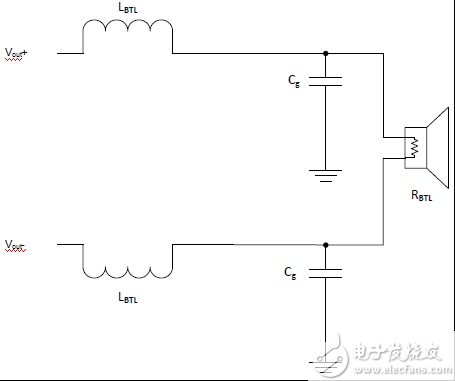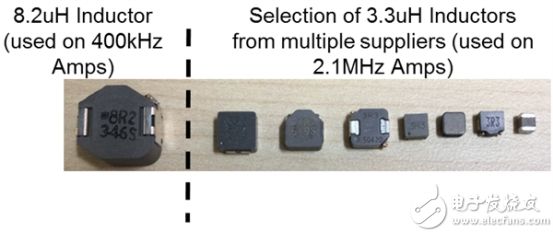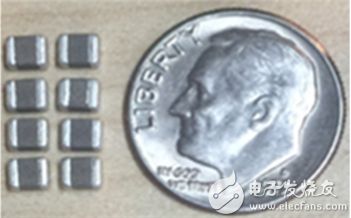Recently, when you turn on your TV or website, you will definitely see a lot of news about the mini-house boom. Smaller is better, right? Similarly, mobile phone manufacturers are also selling small, lightweight and lightweight phones. This trend will naturally spread to the field of automotive class D audio amplifiers. Therefore, in this blog post, I will discuss how to use a small inductor for a Class D amplifier in an infotainment system. background A Class D audio amplifier design for a vehicle requires a filter to be installed at the output of the amplifier. The filter uses inductors and capacitors at each output, commonly referred to as an inductor-capacitor (LC) filter. Proper selection of the value of the LC filter is critical to meet the required audio performance, efficiency, electromagnetic compatibility (EMC) / electromagnetic interference (EMI) requirements and cost, especially in automotive audio mainframe and external amplifier applications. The Class D amplifier bridged load circuit shown in Figure 1 is an output configuration in which a speaker (or load) is connected between the two amplifier outputs, bridging the two outputs. Therefore, a Class D audio amplifier for a vehicle typically requires two inductors per channel (speaker). Figure 1: Class D amplifier bridged load circuit Why are small inductors important? Today, automakers are adding more automotive electronics subsystems to their cars. However, there is limited space in the car, so electronic module suppliers are under pressure to make subsystems smaller. Second, the secondary impact of electronic module suppliers is that automakers are constantly striving to make vehicles lighter to improve fuel efficiency. Although there are many subsystems to be evaluated, I now want to focus on comparing the size and weight of the inductor as part of the car radio design in the infotainment system. A typical car radio design has at least four channels to drive two front speakers and two rear speakers. For automotive Class D audio amplifiers, this simple configuration requires a total of eight inductors because each channel requires two inductors, as shown in Figure 1. Therefore, the size of the eight inductors accounts for a large portion of the overall printed circuit board (PCB) size and design weight. Compare inductor size with amplifier switching frequency For automotive Class D audio amplifiers, the value of the inductance in the LC filter required to ensure proper filter characteristics with pulse width modulation (PWM) demodulation depends on the switching frequency. In Figure 2, in a typical Class D audio amplifier design with a switching frequency of approximately 400 kHz, the inductor size for the LC filter is larger than the inductor size required for the new Class D amplifier design switch at higher frequencies. Many, such as TI's TAS6424-Q1 device's output switching frequency is 2.1MHz. A 400kHz automotive audio amplifier typically uses 10μH or 8.2μH inductors, while a 2.1MHz high switching frequency amplifier design can take advantage of the smaller, lighter 3.3μH-3.6μH range of inductors (assuming each amplifier provides Equal output power). Figure 2: Comparison of inductor size and switching frequency What increases the weight of the inductor? The difference in weight between the 8.2 μH and 3.3 μH inductors is primarily due to the significant weight difference between the copper wire windings and the core material required to achieve the inductance and current handling capabilities required for the LC filter. As mentioned earlier, a simple four-channel car radio design requires eight inductors. In Figure 3, you can see the difference in weight (the total weight of copper and core material) between a four-channel radio design based on a 400kHz switching frequency and a radio design based on a 2.1MHz switching frequency. Figure 3: Inductance weight difference for a typical four-channel amplifier New metal alloy inductors enable very small size amplifiers Conventional inductors in a 400 kHz switching frequency amplifier design use copper wire and ferrite materials as the core. With the higher 2.1MHz switching frequency, inductors with copper conductors and new metal alloy core technology can be developed to achieve incredibly small inductor sizes. Figure 4 shows that the new metal alloy technology not only provides the lightest weight solution, but also helps to significantly reduce the overall size of the four-channel amplifier. Figure 4: Small Metal Alloy Inductors for Typical Quad Amplifiers in conclusion Automotive D-class audio amplifier designs with higher switching frequencies, such as the 2.1MHz TAS6424-Q1, are the future of the next-generation automotive radio and external amplifier industry. High-frequency switching frequency amplifiers also help drive technological advancements in the inductor industry, providing a system solution that is smaller and lighter overall. E-glass rod,Power fittings,Insulator fittings,Polymer insulator TAIZHOU HUADONG INSULATED MATERIAL CO.,LTD , https://www.thim-insulator.com



February 02, 2023